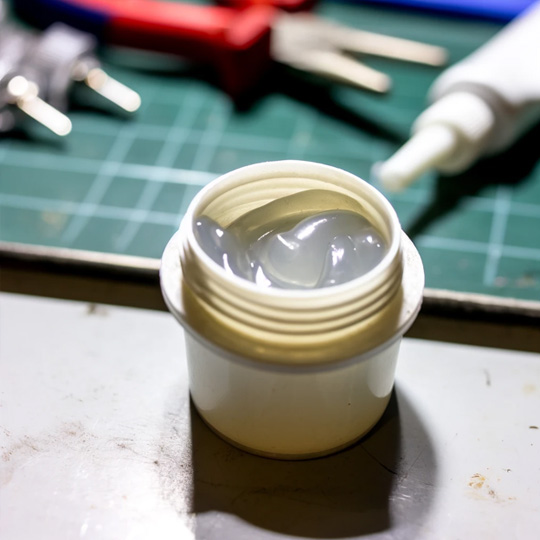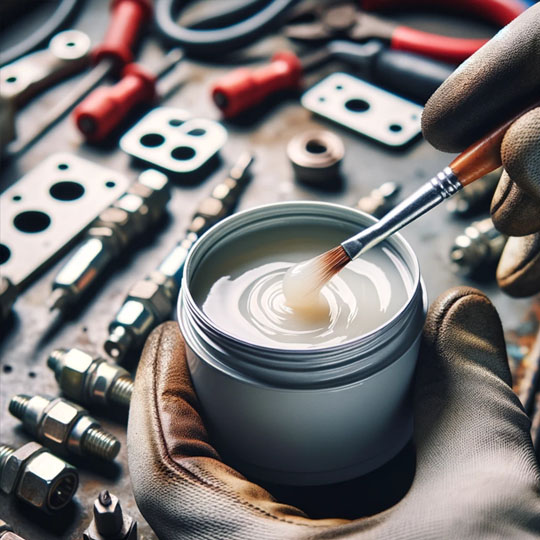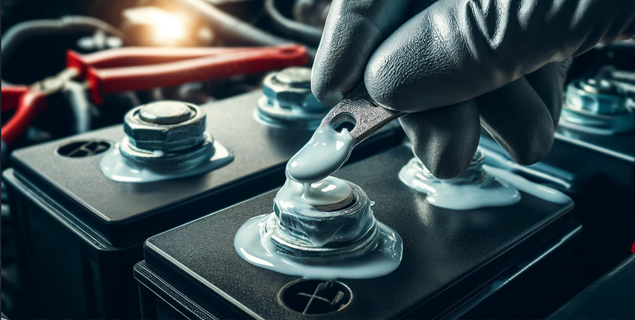Before we get to know whether we can use dielectric grease on battery terminals, first learn what dielectric grease is. Dielectric grease is a silicone-primarily based, non-conductive grease that is really used to defend electrical connections from moisture, dirt, and corrosion. It’s specifically useful in environments where these factors are ordinary.
key factors affecting dielectric grease:
Non-Conductive:
It does not conduct energy, which makes it secure to apply to electrical connectors to save you from unintentional electrical paths.
Protective Barrier:
It serves as a barrier against contaminants that can damage lines or connections.
Waterproofing:
Its waterproof housing shields electrical components from potential water exposure.
Applications:
Automotive and marine electrical components commonly utilize this material. For example, at spark plug boots, battery terminals, headlight connections, and many other areas of electrical connection.
Usage:
When using dielectric grease on battery terminals, apply it sparingly to the metal parts of electrical connections but avoid getting it on the actual metal-to-metal contact points within connectors, as it’s meant to seal out moisture from the surrounding environment rather than enhance conductivity.
Dielectric grease can help ensure that your electrical connections last longer and perform better by preventing the typical wear and degradation caused by environmental factors.
can you use dielectric grease on battery terminals

can dielectric grease be used on battery terminals or can i put dielectric grease on battery terminals there are multiple questions.
can we use dielectric grease on battery terminals and how to apply it on battery’s terminal. Let’s explore.
Yes, you can use dielectric grease on battery terminals. Dielectric grease is a silicone-based lubricant that can prevent moisture from entering joints, as well as corrosion. The use of battery cables can be useful, especially in areas where corrosion is likely.
Here’s how to apply a dielectric grease on battery terminals.

Clean the battery terminals:
Before lubricating the battery terminals, make sure they are clean and free of rust. You can do this with a wire brush or battery cleaning tool.
Disconnect the battery:
For safety, first disconnect the battery cable, starting from the negative terminal. This reduces the risk of a short-term traffic accident.
Apply grease:
Clean the wires, and apply a small amount of dielectric grease directly to them. Some cable connectors are also preferred to apply.
Reconnect the battery:
Reconnect the battery cables, starting with the high-quality terminal and moving on to the bad terminal. The lubricant ought to be between the connector elements.
Extra Protection:
If preferred, you may additionally apply greater lubricant across the outside of the connector after the wires are connected to help absorb moisture and dirt.
Using dielectric grease can assist extend the existence of your battery cables through imparting protection in opposition to corrosion and improving electric powered resistance over time.
Conclusion
In conclusion, the utility of dielectric grease on the battery terminal is a very powerful technique to shield this essential connection from corrosion. This fully silicone-based non-conductive oil acts as a protective barrier, making your battery connections last longer and more reliable, especially in harsh environments. By making use of it correctly—cleaning the terminals, applying grease to the connectors, and making sure there is a proper connection—you could help save on electrical failures and maintain the highest quality of your battery machine. Thus, dielectric grease is a simple and cost-effective preventative measure for retaining your vehicle’s electric connections.

